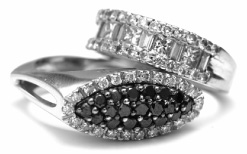
Learn the History of Diamonds - Sell Diamonds
One of the challenges with tracing the history of diamonds begins with the name given to the gems by the ancient Greeks—adamas. As an adjective, the word was used to describe the world’s hardest substance and at one point may have also referred to sapphires, the next hardest.
In India the first reference to diamonds, or as they were known in Sanskrit vajra, meaning thunderbolt, date to the 4th century BCE and is supported by archeological evidence. The Indians even created a text in the 6th century that details their knowledge of the precious gemstones the Ratnapariksa of Buddha Bhatta.
When the Indian’s knowledge of diamonds interacted with those living along the Mediterranean is unclear. Pliny the Elder (23-79 CE) refers to diamonds in his writings.
During the 13th century, diamonds began appearing as accent stones in some jewelry of the European court. Three centuries later, diamond faceting increased the size and use of diamonds in jewelry.
Diamond cutting is believed to have begun in Venice around 1330. It wasn’t until the 17th century that gems began to be the focus of jewelry designs and not the settings. During this period, Indian diamond production was peaking.
The discovery of diamonds in South Africa in 1867 dramatically changed the place of diamonds in the world. What was once thought of as extremely rare, became much more accessible to the common people. From 1867 to 1882, South Africa produced more diamonds than India had in 2,000 years.Sell Diamonds - Back to the Learning Index


